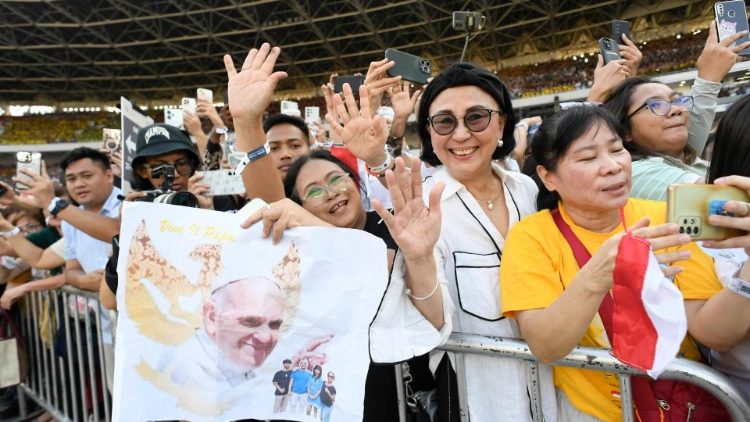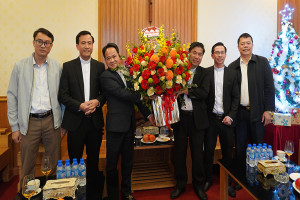
Pope Francis arrived in Indonesia on Tuesday (Sep 3), kicking off of his tenure to the Asia Pacific region including Papua New Guinea, Timor-Leste and Singapore, over 12 days.

Pope Francis meets Indonesia President Joko Widodo on September 4
The trip was his 45th Apostolic Journey abroad and the longest trip Pope Francis has ever made, despite concerns about his health. The trip, which was originally scheduled in 2020 but postponed due to the Covid-19 pandemic, the visit is being seen as a nod to the importance of Asia, one of the few places where the church is growing in terms of baptized faithful and religious vocations.
The trip is expected to emphasize interfaith religious dialogue and highlight environment protection.

Pope Francis meets religious leaders at Istiqlal mosque
Indonesia was the first stop on the Pope’s 12-day, the world's most populous Muslim-majority nation, accounting for 87% the country population. Pope Francis met with Indonesia President Joko Widodo on September 4. The President emphasized that Indonesia and the Vatican are united to promote peace, brotherhood and prosperity for all humanity.
On September 5, Pope Francis visited and met with representatives from six officially recognized religions in Indonesia including Islamic, Buddhism, Confucianism, Hinduism, Protestantism and Protestantism at Istiqlal Mosque. Pope Francis and Nasaruddin Umar, the grand imam of Istiqlal Mosque signed interfaith declaration, promoting religious harmony for human beings, tolerance and environment protection.

Right after, Pope presided over a holly mass for an estimated 100,000 people at a Gelora Bung Karno stadium in Jakarta.

Pope Francis arrived in Papua New Guinea on September 6 for the second leg of his trip. Papua New Guinea, is spread over more than 400,000 square km and 600 islands, is home to over 800 languages - some 12% of the world's total, with a population estimated at 10 million people, including 2 million Catholics (accounting 26% the country population).
Pope Francis has met with Papua New Guinea's political leaders and diplomats, including Prime Minister James Marape, and praised the country's linguistic and ethnic diversity and rich natural resources.

Pope Francis meets leaders of Papua New Guinea on September 7
Pope Francis is the second pope to visit Papua New Guinea, after Pope John Paul II first visit in 1995.

Pope Francis visits Vanimo diocese, Papua New Guinea

Later, Pope Francis visited East Timor, the youngest countries since it gained its independence from Indonesia in 2002 with Catholic making up 97,5 % the population. He has officiated mass in the capital Dili, on the same seaside esplanade where Pope John Paul II spoke in 1989.
Francis wrapped up his trip with a visit to Singapore, where Christians account for almost 19% of the population and one third are Catholics on September 11.
He has met with Singapore President and celebrated Mass at the National Stadium, etc.
For the past decade, Pope Francis has visited many countries in Asia region including Korea, Sri Lanka, Philippines, Japan, Bangladesh, Mongolia, Myanmar and Thailand.
Anh Khôi




